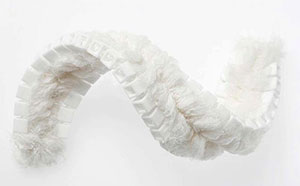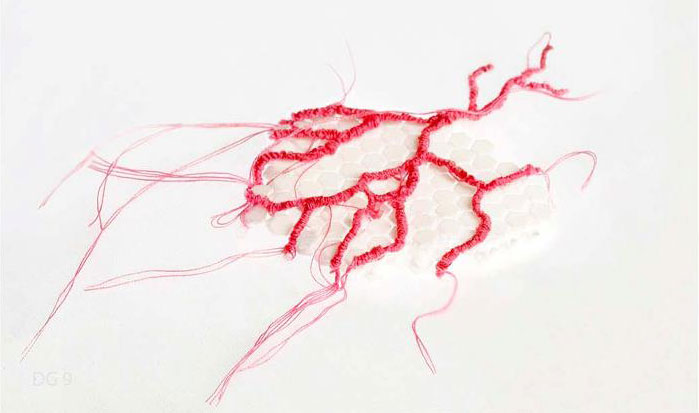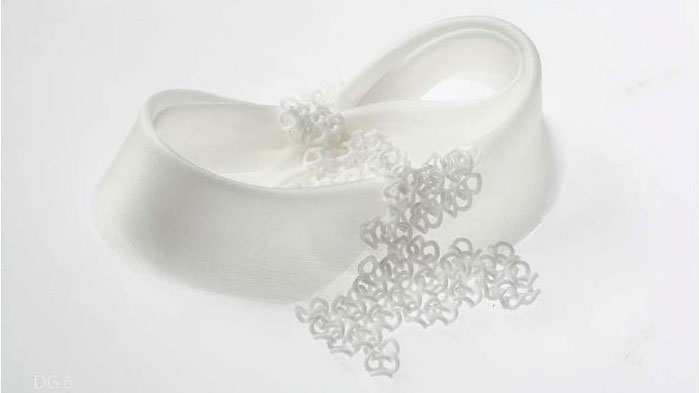On 3Dprintingindustry.com we love 3D printing and we think it has a big future, but we are not blind to the fact that, especially in the present, 3D printing applications can be valorized by combining them with traditional manufacturing practices. This is true for objects and and parts, and, according to textile designer Laura Martinez, particularly pertinent for textile designs.

Laura Martinez is proposing yet another way. Her Digicrafted project, which was first spotlighted at the 3D Print Show in London last November, seeks to use traditional textile craft to soften the digital aesthetic of 3D printed textiles. Her creations make full use of the complex geometries and structures that can be created only through 3D printed technologies, combining them with elements made through traditional labour intensive needlecraft and fabric manipulation techniques.
The concept behind Digicrafted, which can (and often is) applied to a large number of 3D printed applications, is that traditional handcraft adds value to 3D printed objects both by conveying a more familiar feel to a particular item and by helping us comprehend past manufacturing techniques to fully appreciate the new possibilities that 3D printing offers.
Martinez is a member of POSTextiles, a collective of textile designers who try to interrogate established perceptions in their discipline to fully understand what it means to be a textile designer in the 21st century. Her project specifically wants to explore the “yet undefined space where traditional textiles and additive technologies are combined.”
Her creative research has yielded some very interesting designs but has not yet answered the question of whether 3D printing will one day fully replace all traditional textile techniques. Then again, there seem to be so many different ways to go about 3D printing clothes that it does not really matter, does it?





